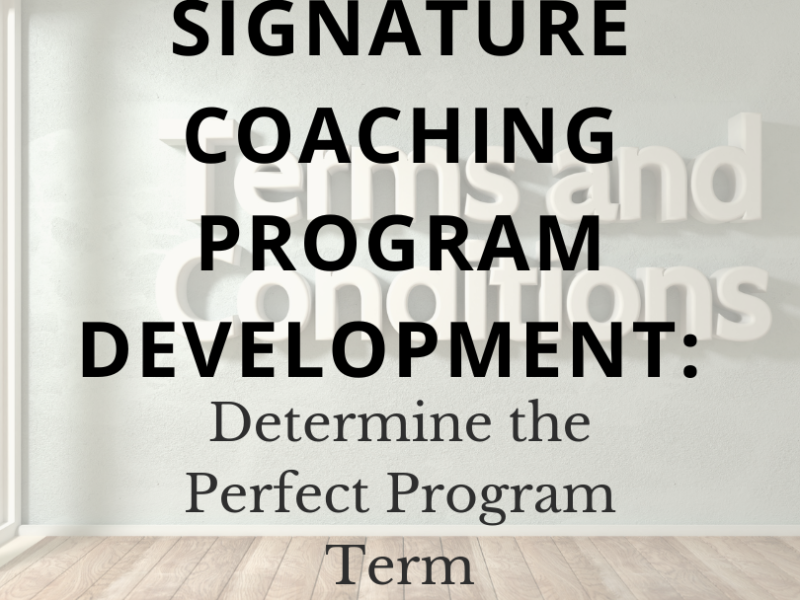
When creating a signature coaching program, one of the most critical decisions you’ll make is determining the program term. How long should your program be? Should it span weeks, months, or even a year? The answer depends on the depth of transformation you’re offering and the needs of your ideal clients.
In this blog post, we’ll explore how to determine the perfect program term for your coaching program, ensuring it aligns with your goals, your clients’ expectations, and the outcomes you promise.
Why Program Term Matters
The length of your coaching program plays a significant role in its success. A well-defined term:
- Sets clear expectations for your clients.
- Provides a structured timeline for achieving results.
- Helps you stay organized and deliver consistent value.
- Enhances client commitment and accountability.
Whether you’re offering a short-term intensive or a long-term transformational journey, the program term should reflect the complexity of the outcomes you’re delivering.
Step 1: Align the Term with Your Coaching Goals
Start by asking yourself: What are the primary goals of my coaching program?
- Short-Term Programs (4-12 weeks): Ideal for specific, actionable outcomes like building a new habit, launching a project, or preparing for a career transition.
- Medium-Term Programs (3-6 months): Perfect for deeper transformations, such as improving confidence, developing leadership skills, or achieving fitness goals.
- Long-Term Programs (6-12 months or more): Best for life-changing results, such as career pivots, relationship overhauls, or holistic personal growth.
Pro Tip: If you’re unsure, start with a shorter program and expand it based on client feedback and results.
Step 2: Consider Your Clients’ Needs and Commitments
Your program term should align with your clients’ availability, budget, and commitment level. Ask yourself:
- How much time can my ideal client realistically dedicate to coaching?
- What is their preferred pace of learning and growth?
- Are they looking for quick wins or a long-term partnership?
For example, busy professionals might prefer a 3-month program with weekly check-ins, while someone seeking deep personal transformation may commit to a 6-month or year-long journey.
Step 3: Break Down the Transformation Process
Map out the steps required to achieve the desired outcomes. For instance:
- Week 1-2: Goal Setting and Self-Assessment
- Week 3-6: Skill Development and Action Planning
- Week 7-12: Implementation and Accountability
If the process naturally spans 12 weeks, a 3-month program might be ideal. If it requires ongoing support and refinement, consider a longer term.
Step 4: Test and Iterate
Your first program term doesn’t have to be set in stone. Launch a pilot program with a small group of clients and gather feedback. Ask:
- Was the program term too short, too long, or just right?
- Did clients feel rushed or overwhelmed?
- Were the outcomes achieved within the timeline?
Use this feedback to refine your program term for future cohorts.
Step 5: Offer Flexibility
Not all clients have the same needs or availability. Consider offering:
- Tiered Options: A 3-month basic program and a 6-month premium program with additional support.
- Add-Ons: Short-term intensives or bonus modules for clients who want extra guidance.
- Ongoing Support: A follow-up group coaching or mentorship option for long-term engagement.
Conclusion
Determining the perfect program term for your signature coaching program is a balancing act. It requires aligning your goals, your clients’ needs, and the depth of transformation you’re offering. By taking the time to carefully plan and test your program term, you’ll create a coaching experience that delivers real value and sets you apart in the industry.
Ready to design a coaching program that transforms lives? Start by defining your program term and watch your clients achieve incredible results!

Comments